It was World Wildlife Day during the week and it got me thinking: In the design of our homes, how can we support wildlife, rather than contributing to the destruction of it?
Any animal-lovers in the house?! 😊
Here are 9 of my top ideas to help you support wildlife in your home and garden:
1. Add Bee Bricks to Your External Walls
I came across these ‘Bee Bricks’ recently, and they are such an innovative idea! Our poor bees are in dramatic decline because of increased chemicals (pesticides, for example), climate change and loss of habitat.
Bees and other pollinators are essential to our ecosystem and our food production. Without them, we would struggle to produce certain pollination-dependant crops like apples, almonds, broccoli and tomatoes. Farmers would need to pollinate each plant by hand with a little brush or other artificial methods. Can you imagine?!
These Bee Bricks are a fairly effortless way for you to help the bees continue their vital environmental work.
The bricks are designed as a little nesting site for solitary bees with no queen or honey to protect. This means that they are non-aggressive and won’t sting, so no need for you to worry about installing them around children or pets. 😊
ideal Placement of the bee bricks
The bricks, made from 75% recycled material, can be used in place of a standard brick in the construction of your house or garden walls.
Ideally, you should position the bricks in a sunny South facing spot (or North facing if you are in the Southern Hemisphere!). The ideal height is at least one metre (3′ 3″) off the ground and up as high as you like.

If you do not have the opportunity to include them in the construction of a wall, I think they look equally as lovely as stand-alone sculptures. You could try out the Beepot planter sitting on a ledge in your garden – Soo pretty! Great gift idea for a nature-lover too! (Hint hint to my loved ones 😉😁)
2. Create Bird-Safe Glass Windows and Doors
Preventing bird-glass collisions is a superb way of using the design of your home to support wildlife.
In research for this point, I rang three different window suppliers. I hoped to discover their expert advice on preventing birds from flying into glass doors and windows. Surprisingly, none of them supply a solution as standard. However, each company I spoke to did recognise it as a severe problem.
Researches estimate that over one billion birds die annually from window collisions. Some birds are stunned after the collision but manage to fly away, only to die shortly after from injury or internal bleeding.
Why do Bird-Strikes Occur?
Bird collisions typically occur for one of three reasons:
- The window is reflecting the surrounding sky and greenery. This makes the glass pane invisible to the birds and gives them the appearance of a clear flight path.
- The birds are unaware of the transparent barrier between them and objects they see inside the building.
- Artificial light at night confuses and attracts nocturnally migrating birds.
Bird-Deterrent Solutions for Your Glass Windows and Doors:
I did find a few solutions that can help:
- Venetian-type (or similar) blinds (like these) inside your windows create a pattern visible to birds. This helps to deter them from attempting to fly through. Keeping them partially open in the daytime is most effective. This is likely the easiest solution to implement, as most people generally like to have some sort of coverings on their windows.

White Venetian Blinds (partially open) 
Wood Venetian Blinds (partially open)
- Install a bird-deterring window film pattern on the glass. This should make up a pattern of visual markers spaced no more than 10cm (4″) vertically and 5cm (2″) horizontally. These have a significant aesthetic impact, so work with your supplier to select something that will suit the style of your home. I have found ‘Trellis Bird-Safety Film’, which mimics the look of traditional diamond-shaped iron grillwork (or go for the real deal grillwork!).
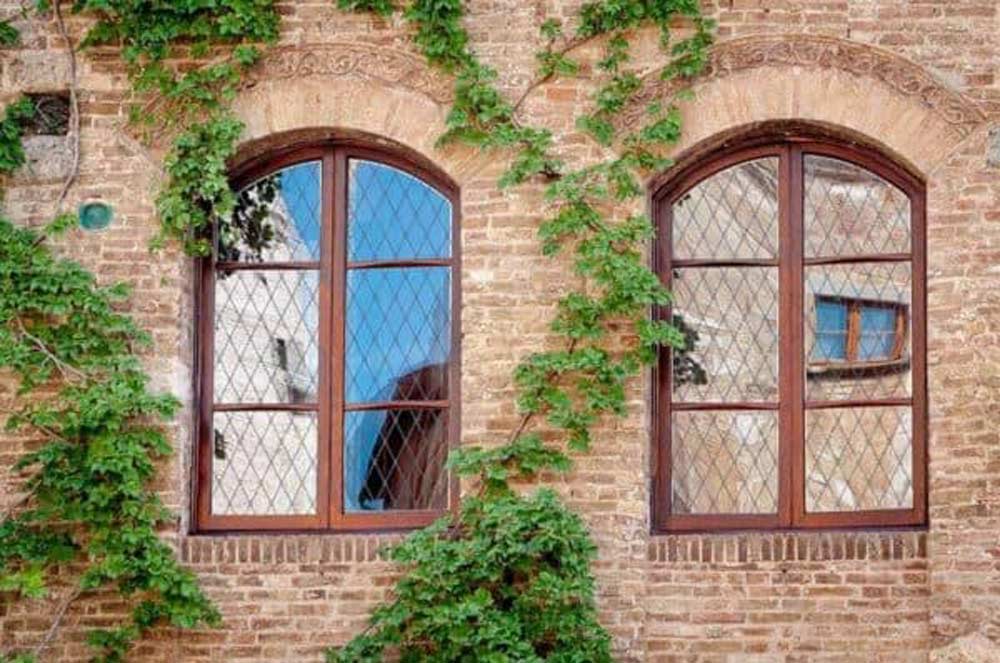
- Ultra-Violet treatment to the glass. Birdsafe.ca recommends that this UV application should reflect 20-40% over the 300-400 nanometer wavelength.
- Etched, frosted or stained glass will all help to deter birds from striking your glass.
- Externally-mounted mesh screens are another (less attractive) option.
- Architectural elements such as shutters or louvres. These attractive features can be designed in to help with sun-shading as well as preventing bird collisions.
- Dim the lights and close your curtains and blinds at night time so as not to confuse migrating birds.
Sources: Bird-Friendly Building Design Guide, The Humane Society, FLAP (Fatal Light Awareness Program), Birdwatchingdaily.com
3. Add Planter Boxes or Hanging Planters to the Exterior of Your Home
Support endangered wildlife with lots of planting around your home!
Aside from looking beautiful, including some planter boxes or hanging planters (or plant pots, or basically any vessel to hold plants!!) are a great way to support wildlife. Our pollinating bees, butterflies, bats and birds, in particular, will thank you.
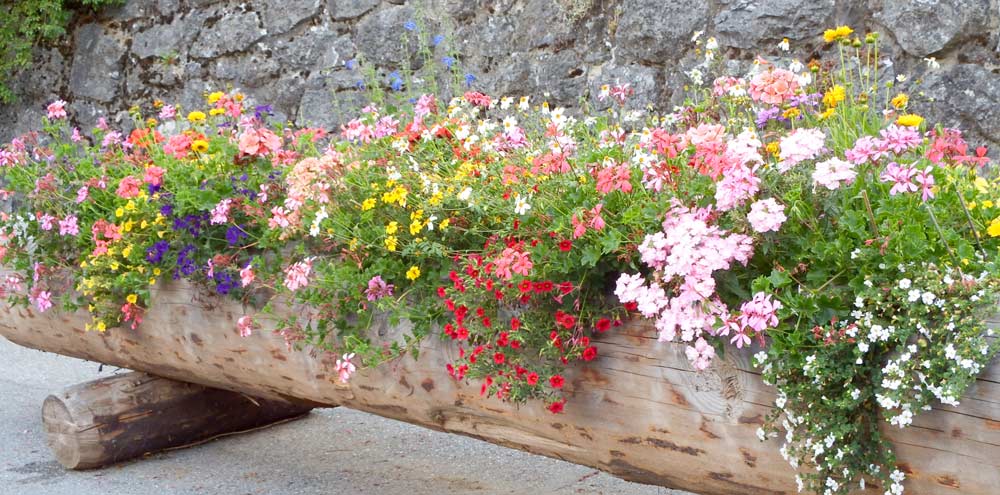
For some great ideas on hanging planters, have a look at this blog post: 10 Eco-Friendly Hanging Planter Ideas to Give your Home a Designer Edge. Lots of these are suitable for outdoor use, particularly the ceramic and iron ones.
- Suspend hanging planters around the external walls of your house.
- Place planter boxes on your window sills or around your house.
- Allow a portion of your garden or outdoor space to grow ‘wild’. Don’t pull up things like dandelions – they are not ‘weeds’; the pollinators love them!
- If planting, stick to wildflower plants that are native to your region.
- For an extremely easy way to bring in colourful wildflowers to your planters, try these easy Wildflower Seedboms!
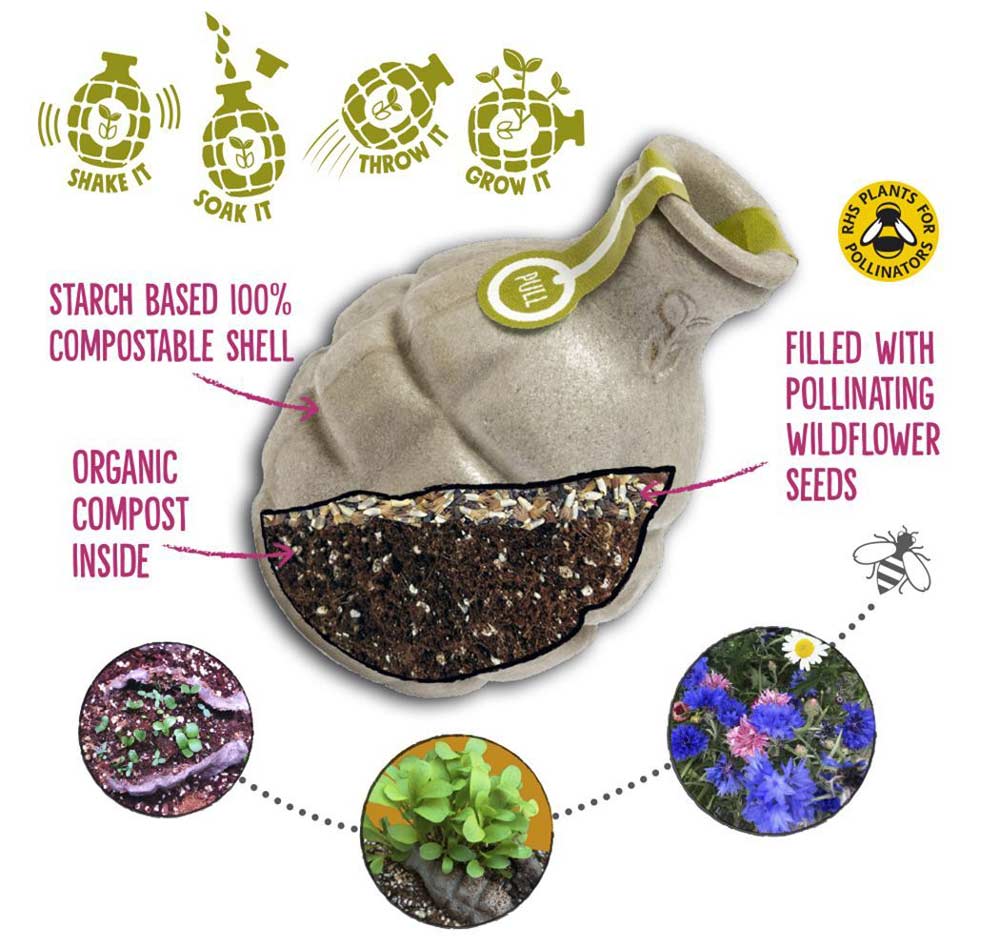
4. Avoid Plastic in Building Products and Home Decor
In the construction or interior design of your home, using natural materials, and avoiding plastic, is one of the best ways to support endangered wildlife!
If you haven’t seen A Plastic Ocean on Netflix – Watch it immediately, if not sooner!
*Phrase borrowed from a friend – Thanks, Eimear!😄
It shows the devastating amount of plastic in our environment: micro-plastics being consumed by marine life, plastic-netting choking small animals and mammals, and small chunks of plastic being swallowed by birds.
While the focus of this article is protecting and supporting our wildlife, it is worth mentioning that plastic eventually makes its way into our food chain and is consumed by us with detrimental health effects.
As well as the actual plastic product itself, the production process to produce it is harmful to the environment and, in turn, detrimental to the wildlife.
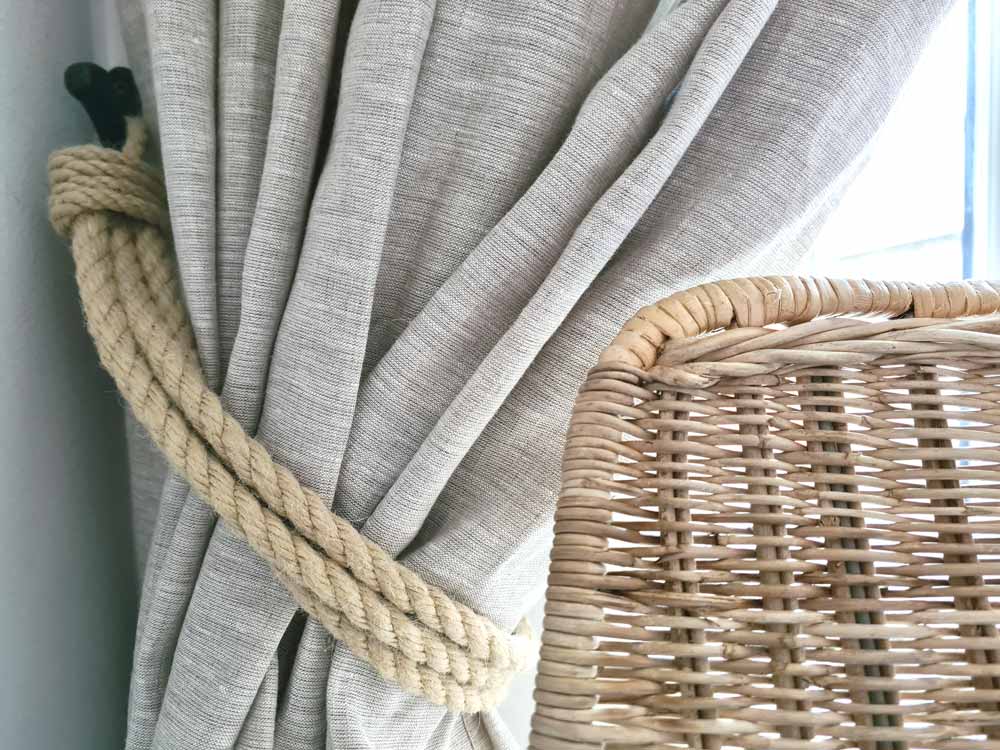
We can support our wildlife by choosing natural, plastic-free building and home decor products. Some ideas on how to do this:
- Natural insulation (wood fibres, flax, hemp, cork, wool) rather than all of the plastic-based standard insulation solutions on the market today.
- Natural wood rather than faux laminate. Best for flooring, furniture and joinery.
- Natural fabrics (linen, cotton, hemp) rather than synthetic (plastic) fabrics like polyester or nylon. Natural fabrics are great for bedding, cushions, rugs, blankets and curtains.
- 100% natural paint – rather than the synthetic plastic-based acrylic and vinyl paints that unfortunately reign the market today. Read more on this post: Natural Paint Vs. Conventional Decorative Paint – What’s the Difference?
And see my recommended natural paint products and discount codes.
5. Shop with Ethical Companies
Particularly for animal-derived materials, such as wool, leather, feathers (goose-down or feather-fill), it is crucial to choose companies with ethical certifications. This will help to avoid animal-cruelty within these industries, such as live-plucking bird farms.
Examples of where to shop for ethical products:
- Ethical cushion fillers made from a mix of duck feather and down and covered with the best quality cotton – 100% natural materials.
- Ethical goose-down duvets and natural goose-down pillows – Carry the prestigious Downpass seal to certify no live-plucking and no force-feeding.
- Ethical leather furniture – For example, this rocking chair is handmade from goat leather, a by-product. The herds are farmed ethically by local herdsmen. The leather is dyed using vegetable extract and tree bark without harmful chemicals.

There is, of course, always the option to go completely free of animal products. However, the alternatives are often plastic-based solutions, for example, faux leather (vinyl) or poly-fil cushions. Personally, I would choose ethically-sourced animal materials over plastic alternatives.
I have found some options out there that are both vegan and eco-friendly such as the plant-based duvets and pillows from The Natural Bedding Company.
6. Choose Certified Organic Textiles to Protect Wildlife
You may never have made the connection between organic textiles and wildlife before but just think: Materials grown non-organically are smothered in toxic pesticides during their growth.
These toxins are absolutely hazardous to the soil, and all that lives within it. As a result, any wildlife that feed off the insects or vegetation in these areas suffer cruelly.
Pesticide sprays can carry in the wind and damage nearby land and wildlife habitats too. Organic textiles are grown free of pesticides.
- Organic linen (made from the flax plant) is one of the most sustainable and wild-life friendly materials that exists. Flax naturally needs very little water and few, if any, pesticides to grow well. Eliminating harmful chemicals from the process completely is the ideal scenario. Organic linen (GOTS Certified) is a fantastic option for bedding, curtains, cushions and throws.
- Organic hemp is also a great choice for soft furnishings and is just starting to become more widely available.
- Organic cotton – Limits the use of pesticides and harmful chemicals but still has an extremely high water usage during production. Avoid non-organic cotton.
Organic Certification
Many brands throw around the phrases ‘natural’ and ‘organic’. To be completely sure that they are truly organic, look out for these certification labels:
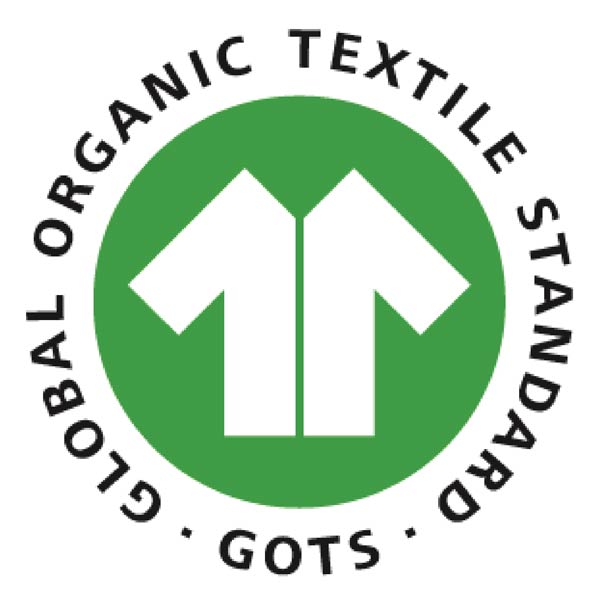
GOTS – Global Organic Textile Standard. An international system that reviews all stages of the supply chain for organic fabrics: from the harvesting of the raw materials, environmentally and socially responsible manufacturing to labelling. Textiles certified to GOTS provide a highly credible assurance to the consumer.
OEKO-TEX – Certifies that materials (textiles and leather goods) are tested for harmful substances. While the Oeko-Tex certification is good (and certainly much better than a non-certified product), it does not mean that it is organic. For the full sustainable benefits and wildlife protection, always look for GOTS certification.
GOLS – Global Organic Latex Standard. Certification on the route from field or farmer level to the certified organic latex product.
Brands often use the wording’100% natural’. It is important to mean that this does not necessarily mean that the product is organic. Truly organic materials will be certified as such.
By limiting (or eliminating) the use of pesticides, herbicides and other chemical pollutants in the home decor products we choose, we can help protect the environment and the endangered wildlife that live on this planet.
7. Check for the FSC Mark on Wood Products to Support Wildlife in Forests
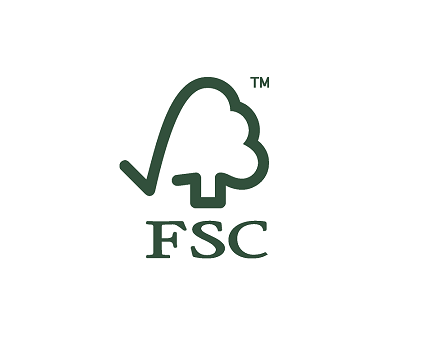
The FSC (Forest Stewardship Council) mark certifies that wood products, including timber, paper and cardboard, are sourced by responsible forestry. Non-certified wood may result in uncontrolled deforestation.
Forests are one of the principal sources of life on our planet. Therefore, we need to do all we can to protect them and the wildlife that lives within them!
It is impossible to overstate the importance of forests to biodiversity, or the extent to which humans depend on both for a wide range of valuable ecosystem services. Forests are home to the majority of life on land – both animal and plant species.
QU Dongyu, united nations
8. Consider Adding a Small Bat Box
Bats have gotten a bad reputation over the past while. But I need to remind you that every wildlife species on the planet has a vital role in our ecosystem. 😊
While it may not seem like something you would like to invite near your home, bats are in severe decline due to habitat loss and adding a small bat nesting box to your outdoor space can help!

Bat boxes can create additional roosting places for bats where roosting options are restricted. Bats benefit a locality by controlling insect populations.
Provide a safe shelter for the bats but do not eat them. I repeat – Do not eat the bats!!
You can construct a bat roost yourself or buy a ready-made made one from FSC wood. Install them near the top of the external walls of your house, garage, or garden walls.
9. Choose Renovation over New Build
If the option is open to you, choose to renovate an existing building over building a new one. This will mean no loss of additional habitat compared with clearing a site for a new build.
Even if the site appears ‘clear’ – consider the biodiversity and wildlife within the soil alone.
However, don’t panic if you are currently mid-new-build! There are still lots of ways to support wildlife in your home design.
How about including some Bee-Bricks in the construction? Or think about creating a wild green roof on your house to increase wildlife habitat, or even on your shed like the very novel example below?!

Whether you are building from scratch, renovating, or simply trying to make your current abode more wildlife-friendly, try to adopt some of the suggestions listed in this post. 😊
The design processes used to create a home that is sustainable and non-toxic are very similar to creating a wildlife-friendly home. Aim for one, and you will naturally win at the other! For more tips, check out this post: 9 Eco-Friendly (and Stylish) Interior Design Tips for Your Home
And follow along on Instagram @jadehaveninteriors for daily inspiration on natural living and healthy, nature-friendly interior design. ❤
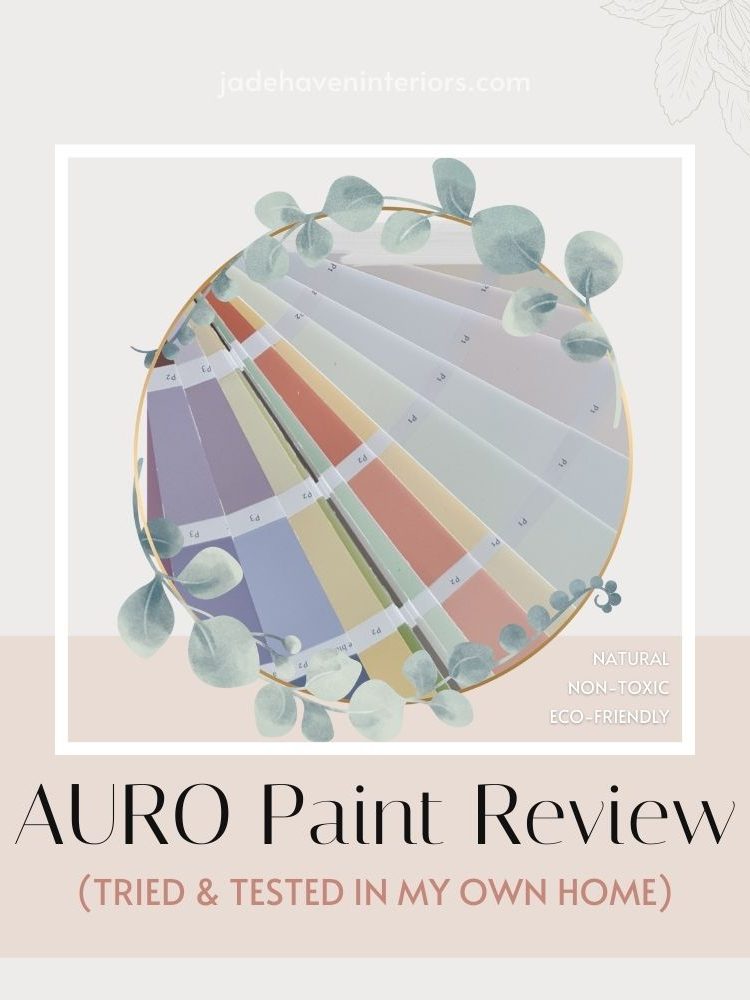
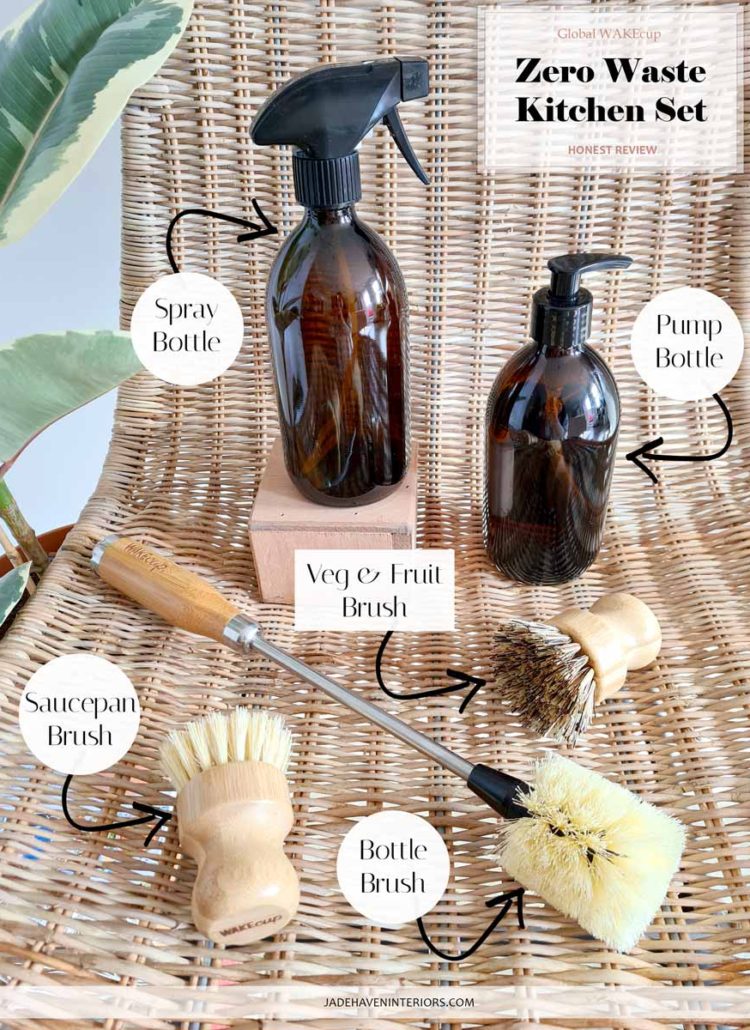
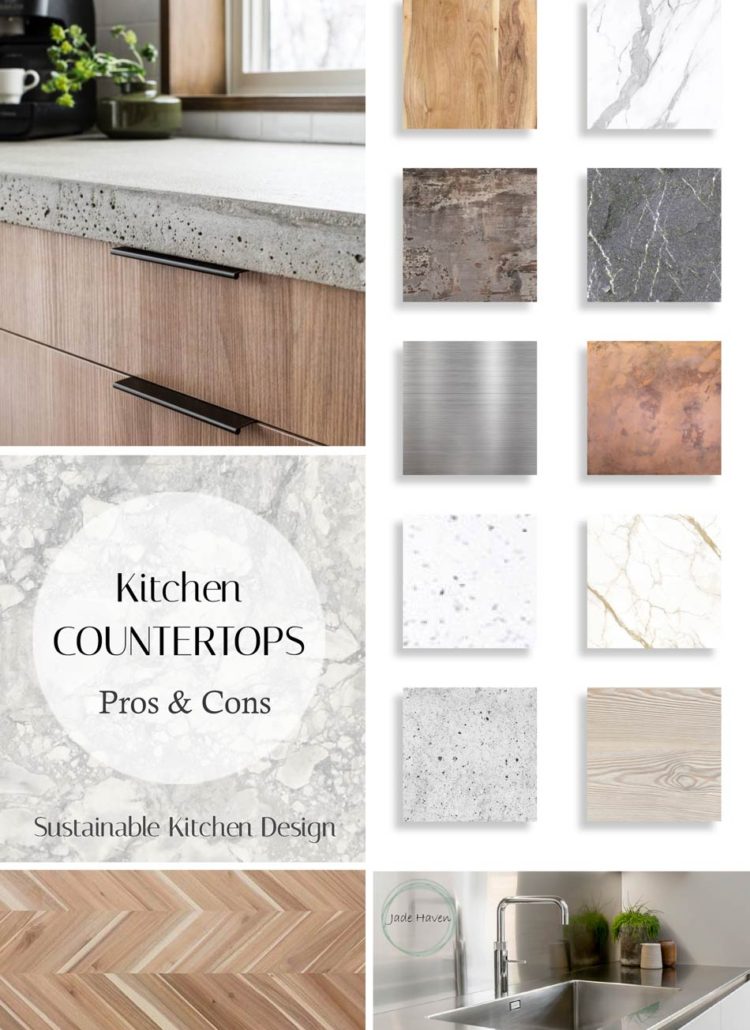
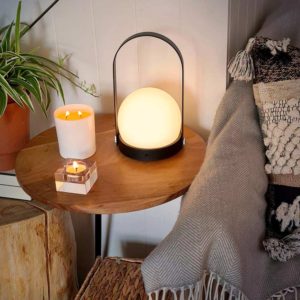

Leave a Reply